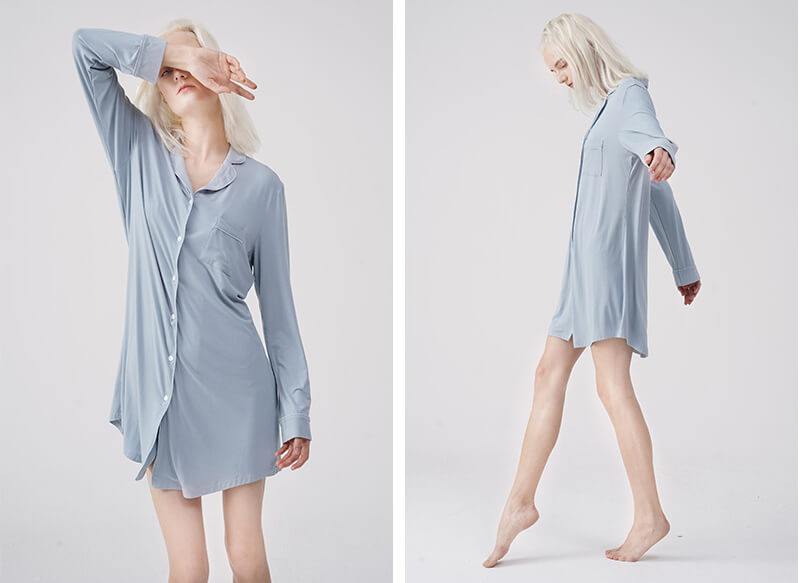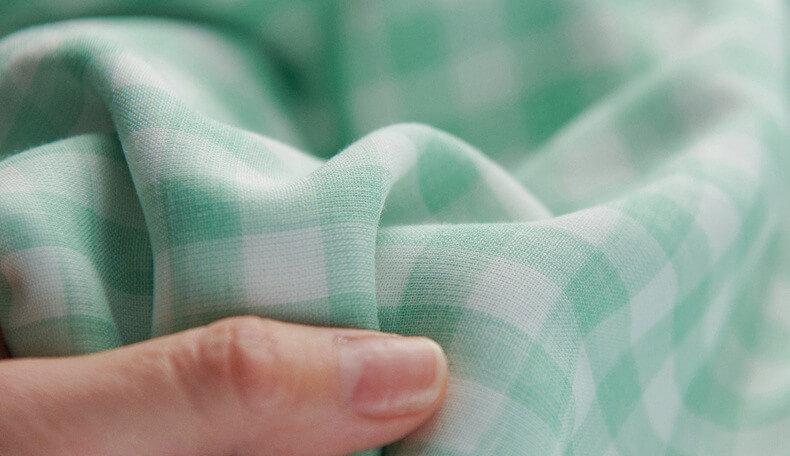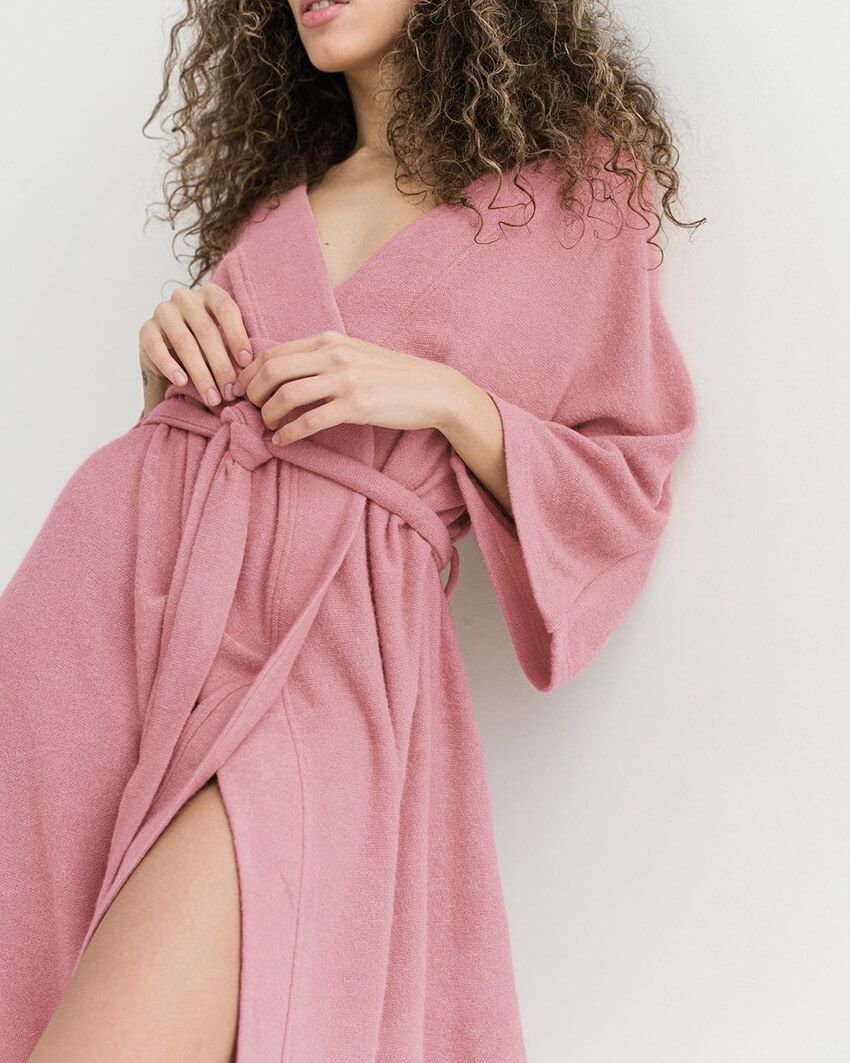Pajamas are a big deal. They’re not just something you wear to bed – they’re an essential part of your wardrobe. Everyone spends a third of their lives in their pajamas. And when it comes to pajamas, there’s no room for compromise. You need the perfect fabric that’s soft, comfortable, and keeps you warm all night long. So where should you go for the best fabric recommendations? To China, of course!
Read on for some of the best fabric recommendations for pajamas, straight from Chinese clothing factories. You won’t be disappointed!
Cotton fabric
Features of cotton fabric
Cotton fibers are natural hollow fibers that are soft, breathable, and absorbent. Cotton strands can contain up to 24 times their weight in water. They are durable, dye-absorbent, and resistant to abrasion wear and high-temperature exposure. Cotton is pleasant in one word. Cotton wrinkles, so combining it with polyester or applying a permanent finish to cotton clothing gives the appropriate qualities to the material. Cotton is frequently combined with other fibers such as nylon, linen, wool, and polyester to produce the best characteristics of each fiber.
Pros& Cons of cotton fabric
According to a study, cotton pajamas provide a better night’s sleep than synthetic fibers. It should be mentioned that cotton naturally allows your skin to breathe and prevents heat from accumulating beneath the coverings.
Advantages of Cotton:
- It is inexpensive and cost-effective.
- It has absorbent properties.
- It is breathable.
- It is easier to wash and care for than others.
- During working time, cotton clothes are too much perfect to wear.
- Cotton is also too much soft.
Disadvantages of Cotton:
- It is not wrinkle-resistant.
- It is likely to stretch or shrink after washing.
- Cotton takes a long time to dry.
- The color fades in sunlight.




Bamboo fabric
What is it?
The term “bamboo fabric” refers to various textiles produced from bamboo plants. For thousands of years, people have been producing textiles from bamboo, but in recent decades, the process of transforming this robust and fast-growing hardwood into cloth has been perfected.
Pros& Cons of bamboo fabric
Advantage of bamboo fabric:
- Ultra-soft & flowy
- Breathable
- Keep you cool in the hot weather
- Powerful insulating
- It is moisture-wicking
- It is antibacterial
- It offers UV protection
- Suitable for sensitive skin
- It prevents wrinkles
- It is a sustainably grown crop
Disadvantage of bamboo fabric:
- Not as quick dry as synthetic fabric
- It shrinks a bit after washing.
- It is more expensive than cotton fabric and synthetic fabric




Modal fabric
What’s it?
Modal is a bio-based fabric produced from beech tree cellulose via spinning. Because beech trees do not need much water to grow, modal is thought to be a more environmentally responsible option than cotton.
Features of modal fabric
- It is manufactured from natural woods, which may be processed naturally by the human.
- Modal is a lightweight, bright, and smooth fiber. Its draping is more excellent than existing cotton, polyester, and artificial cotton, with pure silk luster and touch.
- The Modal fiber has a dry strength of 3.56 cn/ Tex and a wet strength of 2.56 cn/ Tex, making it more robust than regular synthetic fibers. Because of its superior toughness, it reduces breakage during processing compared to pure cotton or polyester cotton.
- Modal fiber fabric has a moisture-wicking function thanks to its considerably higher moisture absorbing capacity of 50% than cotton fiber, allowing it to stay dry and with good air permeability. It is very beneficial to physiological circulation and health since it promotes healthy blood circulation.
- The Modal fiber has superior shaping and dimensional stability when compared to cotton fibers, making it more comfortable and non-ironing.
Pros& Cons of modal fabric
Advantage of modal fabric:
- Water-Absorbent: The Modal fabric is water-absorbent. This makes it an excellent choice for clothing such as exercise wear and undies.
- Soft to Touch: It is pleasant to touch, one of the modal fabric characteristics that many people seek. This implies that modal apparel feels good against the skin.
- Eco-Friendly: Modal fabric is a more eco-friendly option than viscose compared to other rayon fabrics. It is made with fewer hazardous chemicals and sourced from regenerative plants. When Modal is developed with the environment in mind, less hazardous waste is generated while extracting cellulose fibers.
- Biodegradable: Modal is biodegradable. This implies it will degrade, reducing landfill contamination.
- Less Likely to Shrink: Compared to how viscose rayon shrinks when washed, the modal fabric is less likely to shrink. Even when you use a washing machine, it can retain its form.
- The Fabric is Breathable and Stretchy: The Modal fabric is breathable and stretchy. It is flexible to be used for both casual and activewear.
- Durable and Resistant to Pilling: The modal fabric is sturdy and can endure strain. This type of rayon is also resistant to pillage. This implies that the cloth has a smooth finish.
Disavantage of modal fabric:
- Forest Destruction: Modal clothes are made from pulp produced from renewable forests, but there is usually no assurance that the pulp comes from sustainable sources unless Lenzing is involved.
- Harmful Chemicals: Carbon disulfide is a neurotoxin that must be applied to cellulose to produce modal fabric. Carbon disulfide is a neurotoxin. It enters the environment via the air and can induce medical problems. It is also found in industrial wastewater produced during rayon manufacturing.
- Allergic Reaction: When people first use modal fabric, they may experience an allergic reaction. When people use this cloth, they can get rashes, itching, or redness.



Silk fabric
Features of silk fabric
- Breathability. Silk is a breathable, lightweight fabric that helps to keep you cool when you are sleeping.
- Thermal regulation
- Fast dry
- Shine
Pros& Cons of silk fabric
Advantage of silk fabric:
The silk’s protein fibers do not irritate the body. The texture is smooth and soft, and the woven fabric feels comfortable when worn, so people’s demand for silk fabrics is gradually increasing.
Moisture absorption is one of the main characteristics of silk fabric, which can make the clothes not too dry. The reason why silk clothes are breathable and cool when worn is because silk fabrics are porous fibrous proteins that also keep the skin hydrated. In the summer silk porous structure is also conducive to the body’s heat dissipation.
Silk has very good UV resistance. Silk has tryptophan in its protein fibers, which has the property of absorbing ultraviolet rays. Therefore, silk fabrics can block ultraviolet rays and thus textile skin to sunburn.
Disadvantages of silk fabric:
Silk fabrics are easy to deform after a long time hanging.
Silk fabric is protein, sweat will destroy the protein structure, thus reducing the life of the clothes.
Abrasion resistance is poor and by the items hooked to easy to break, wear very carefully.
Cost: Silk is one of the most costly materials available. On the other hand, Faux silk is frequently accessible at a lower cost and has the same feel as genuine silk.


Satin fabric
What is it?
Satin fabric is a luxurious and elegant cloth that is smooth, glossy, and delicate. Satin fabric have a gleaming face with a rough and textured backside. In a satin weave, satin fabrics are made from any fiber, including silk, cotton, or polyester. But normally, we will consider satin fabric is made from polyester.
Pros& Cons of satin fabric
Pros.
Satin weaves are more flexible than plain weave fabrics, and Satin is renowned for its gleaming finish and elegant drape. Here are some of Satin’s characteristics.
Shiny front. The shiny, smooth right side of the fabric is produced by satin weaves, which organize the warp and weft threads. Satin is smooth and exquisite to the touch.
Beautiful drape. Satin weaves have a gentle and fluid drape, perfect for evening apparel and sleeping dress.
Durable. Satin is made from long filament fibers woven extremely tight, resulting in a more robust product than many plain weave fabrics.
Wrinkle-resistant. Satin wrinkles less readily than other fabrics, and thicker satins are less prone to creases.
Cons.
This slippery cloth is not for the faint of heart. Without proper care and attention, satin garments may hang improperly and show wrinkled seams.
Satins are more delicate and require special care. They are vulnerable to snags, thread pulls, and surface abrasion that might cause the cloth to deteriorate. Satins are not machine washable, aside from low-cost synthetics with a tight weave. Dry cleaning is necessary for silk satin. Nylon, polyester, and acetate are examples of synthetic satin fabrics. It is notable that synthetic satin fabric is a combustible fabric.


Towel terry fabric
What is it?
Towel terry is a textured, looped yarn towel that absorbs much water. Its primary component is usually 100% cotton, although it may also include polyester. French terry is a fabric used in men’s, women’s, and children’s apparel.
Features of towel terry fabric
Towel cloth is super absorbent, and that’s why it has a place in pajamas. Imagine you’ve had a long day at work, dragged your tired body, and the shower has drained your remaining energy. At this time, there is a kind of pajamas put on immediately to let your body dry. Doesn’t that sound great? And this fabric is very fluffy and soft.
However, the terry cloth is not easy to dry than the other fabrics mentioned in the article. Therefore, it is better to choose a lightweight terry cloth fabric for your pajamas. Choosing a cotton-polyester blend can shorten the drying time to a certain extent.



Although pajamas are often seen as a personal item, it is important to remember that they are also an extension of your brand. Choosing the right fabric for your pajamas can make all the difference in terms of comfort and customer satisfaction. The fabrics which are suitable for making pajamas are far more than those mentioned in the article. If you’re looking for a quick quote on high-quality pajama fabrics, contact us today. We would be happy to help!
